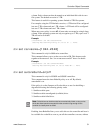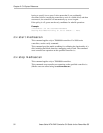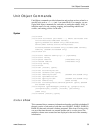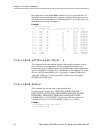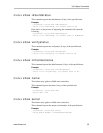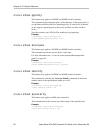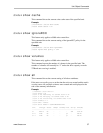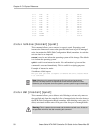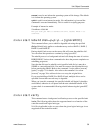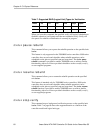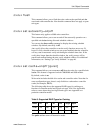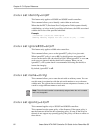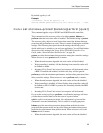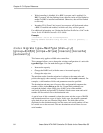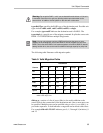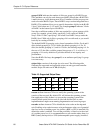
Unit Object Commands
www.3ware.com 59
noscan is used to not inform the operating system of this change. The default
is to inform the operating system.
quiet is used for non-interactive mode. No confirmation is given and the
command is executed immediately. This is useful for scripting purposes.
Example of interactive mode:
//localhost> /c0/u0 del
Are you sure you want to delete the unit /c0/u0? Enter Y to
continue.
/c
x
/u
x
start rebuild disk=
p<p:-p...>
[ignoreECC]
This command allows you to rebuild a degraded unit using the specified
disk=p. Rebuild only applies to redundant arrays such as RAID 1, RAID 5,
RAID 10, and RAID 50.
During rebuild, bad sectors on the source disk will cause the rebuild to fail.
You can allow the operation to continue by using ignoreECC.
The rebuild process is a background task and will change the state of a unit to
REBUILDING. Various show commands also show the percent completion as
rebuilding progresses.
Note that the disk used to rebuild a unit (specified with disk=p) must be a
SPARE or a unconfigured disk. You must first remove the degraded drive(s)
before starting the rebuild. Refer to the command “/cx/px remove [noscan]
[quiet]” on page 73 for details. Also refer to the command “/cx rescan
[noscan]” on page 38 to add new drives or to retry the original drive.
If you are rebuilding a RAID 50 or RAID 10 unit, multiple drives can be
specified if more than one sub-array is degraded.
When you issue this command, the specified rebuild will begin if schedules
are disabled; otherwise it will pause until the next scheduled rebuild. A file
system check is recommended following rebuild when using the ignoreECC
option.
/c
x
/u
x
start verify
This command starts a background verification process on the specified unit
/cx/ux. The following table shows the supported matrix as a function of the
controller model and logical unit type.
N/A (Not Applicable) refers to cases where the given logical unit type is not
supported on that controller model.



